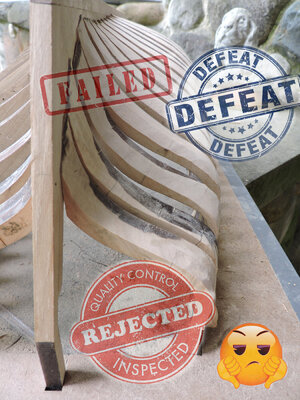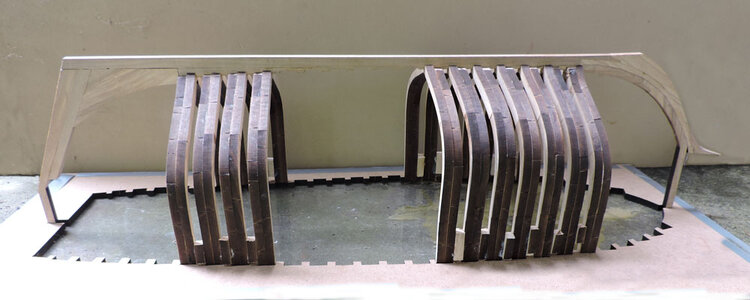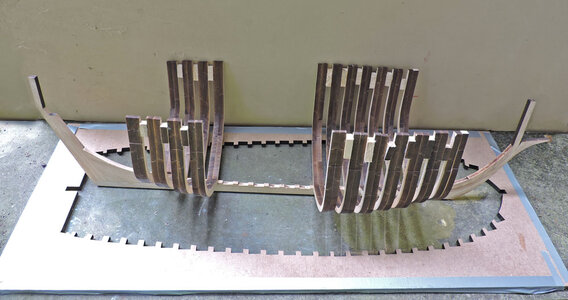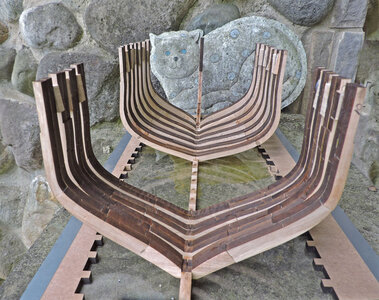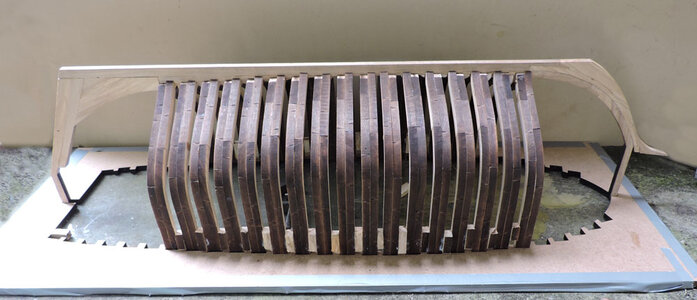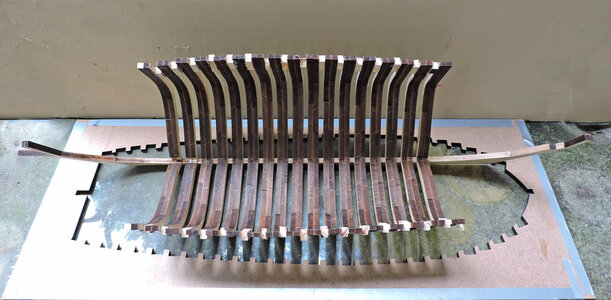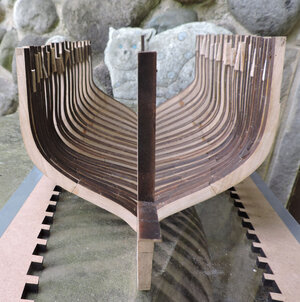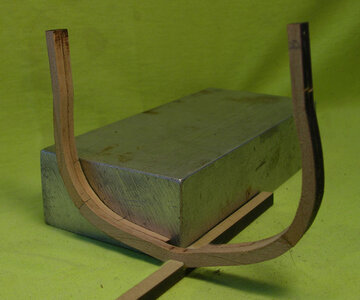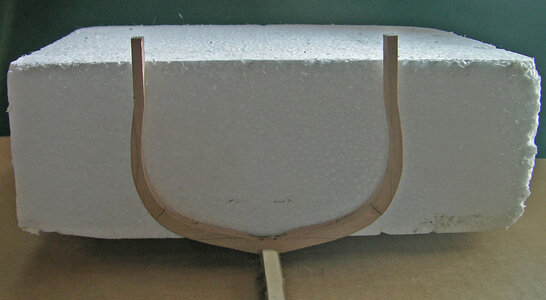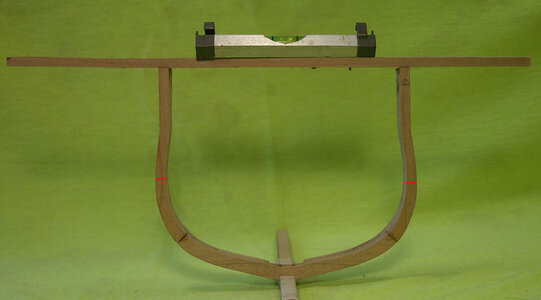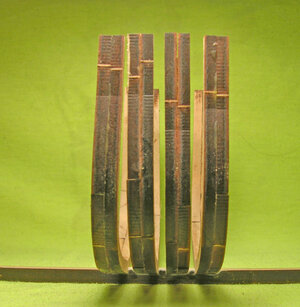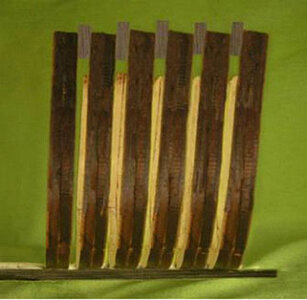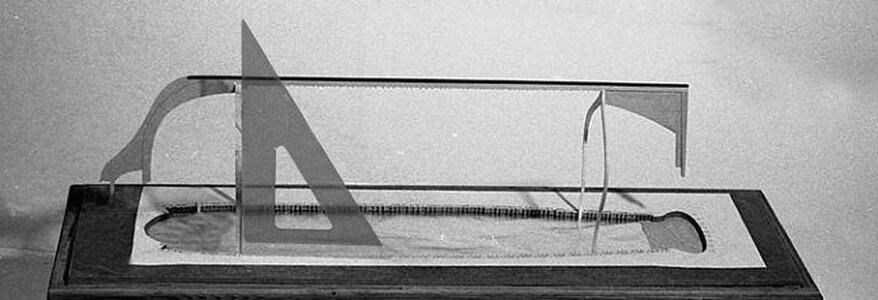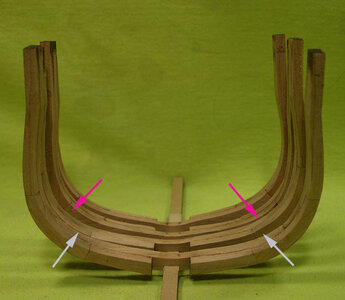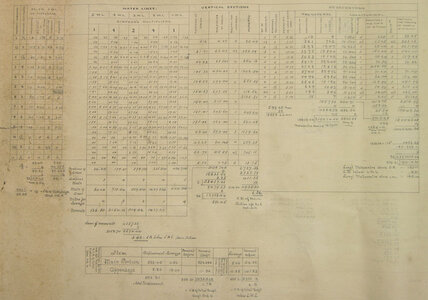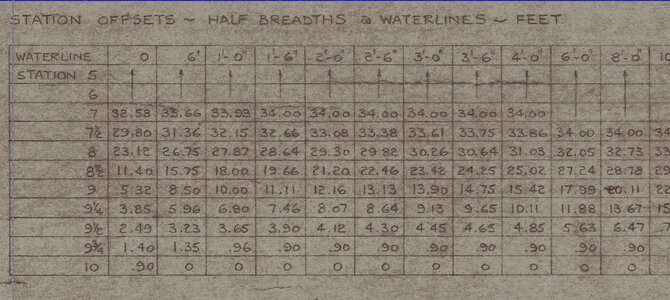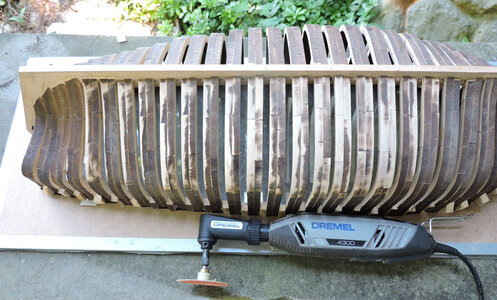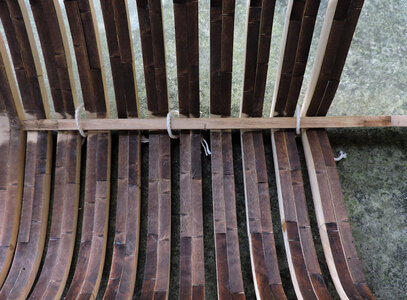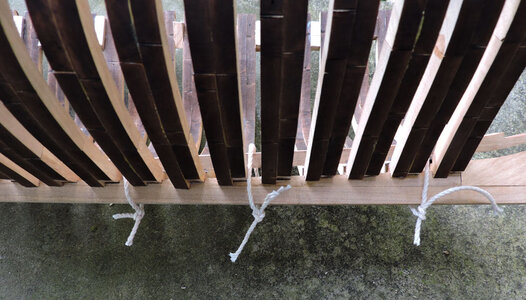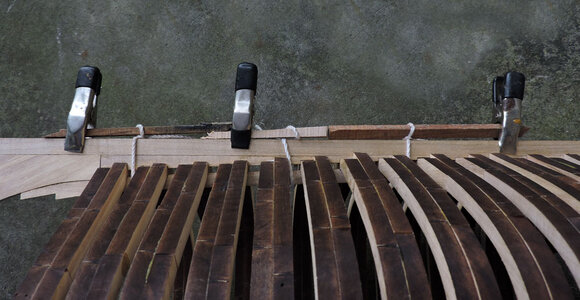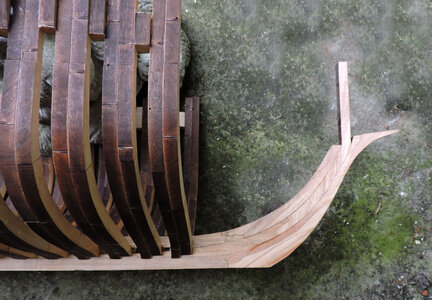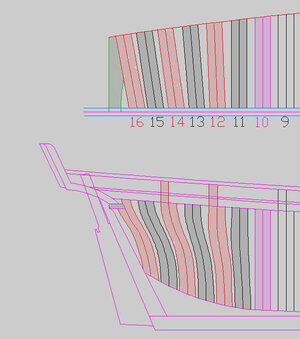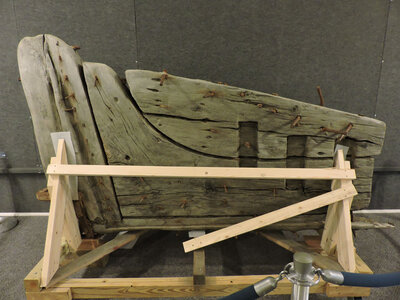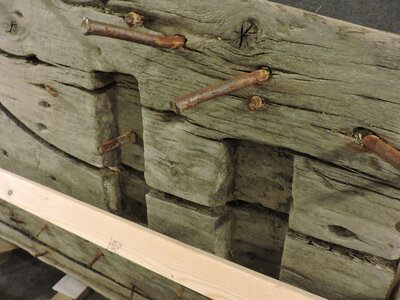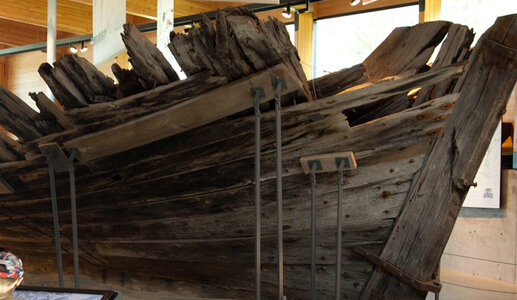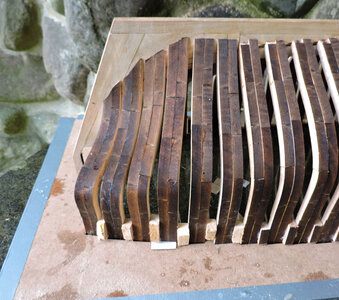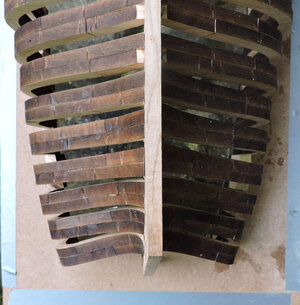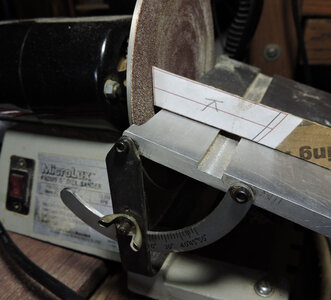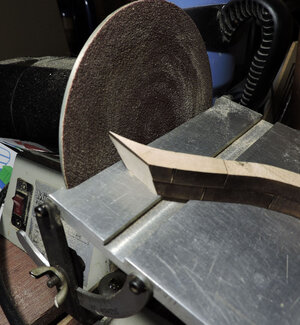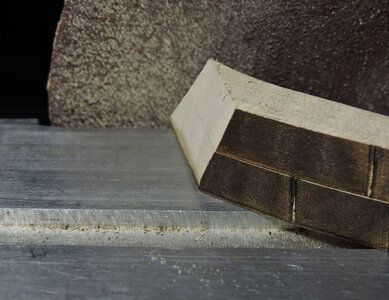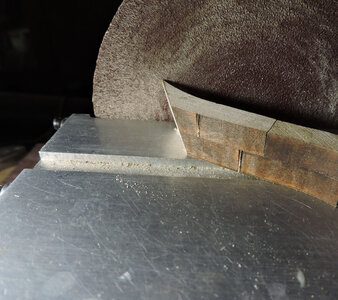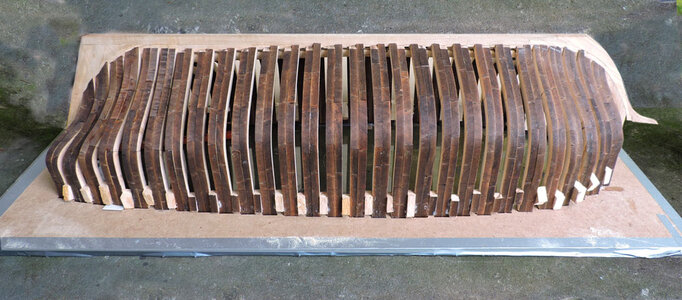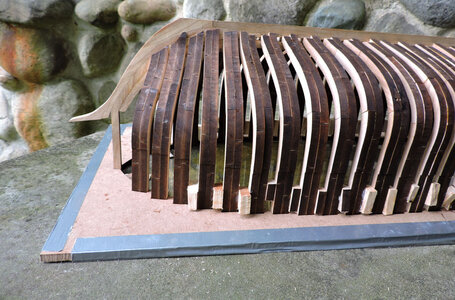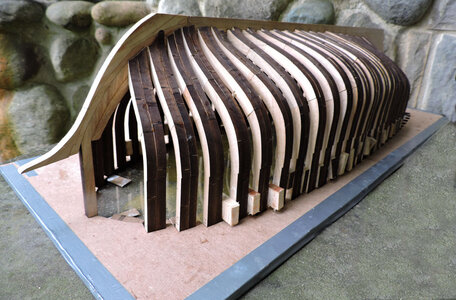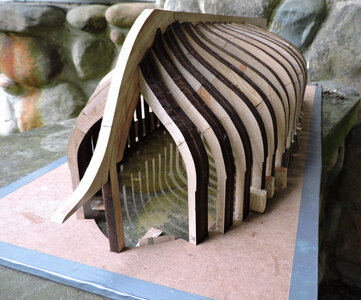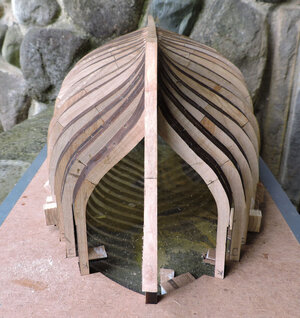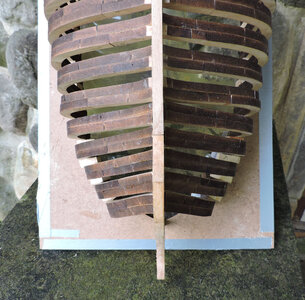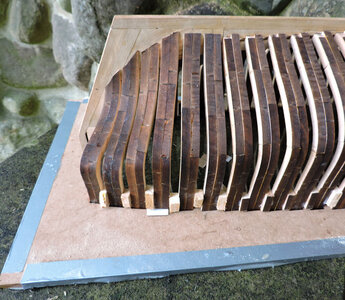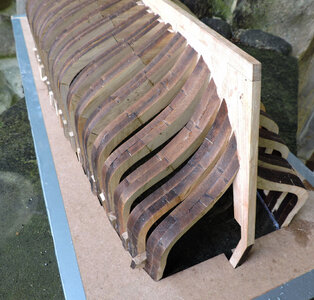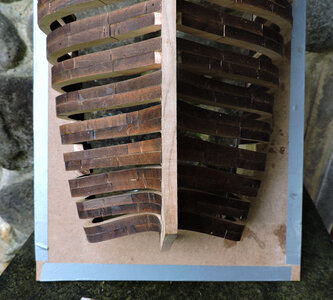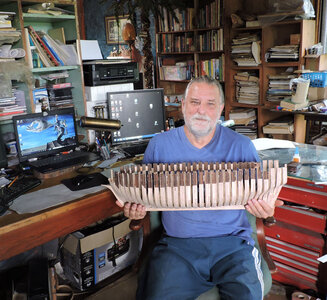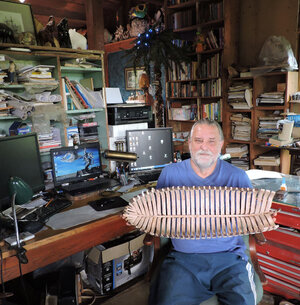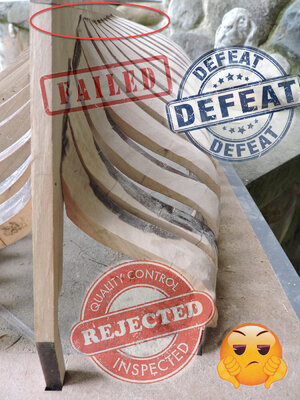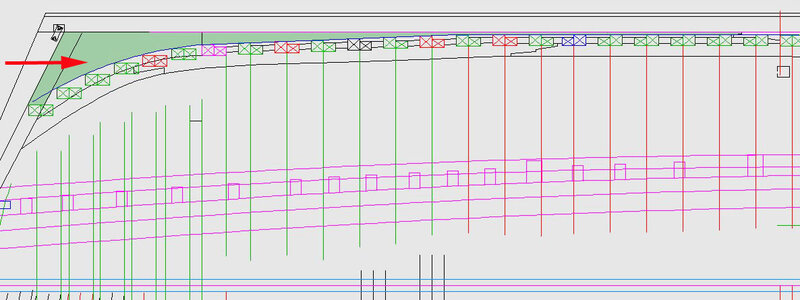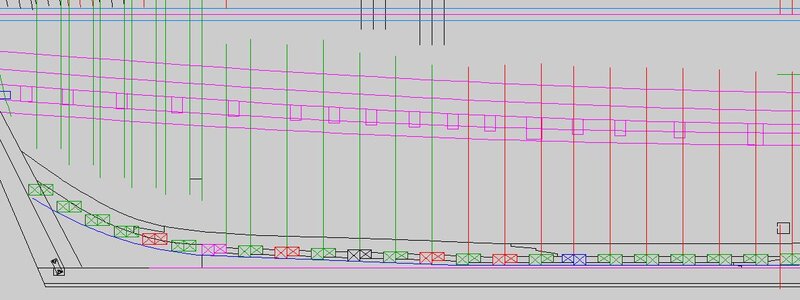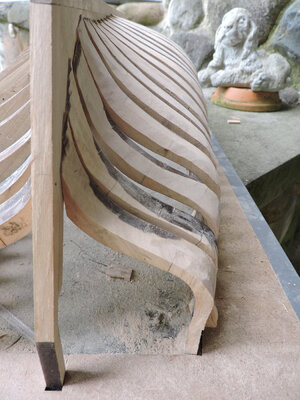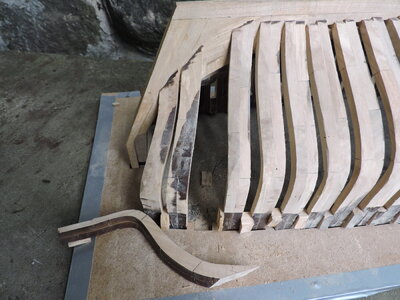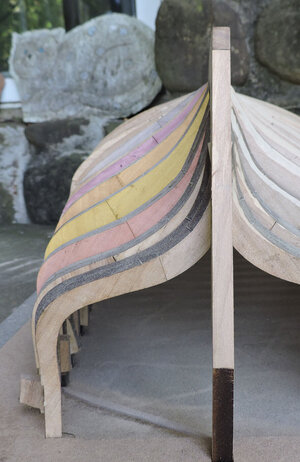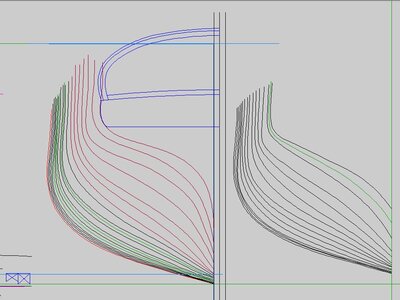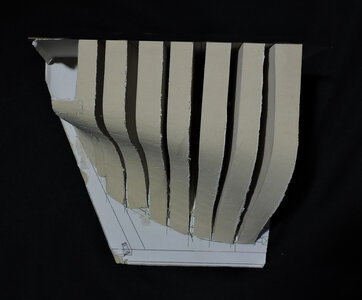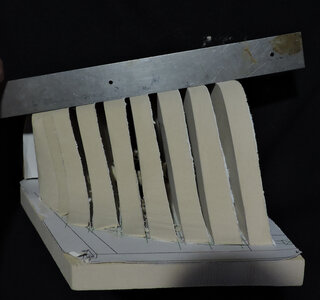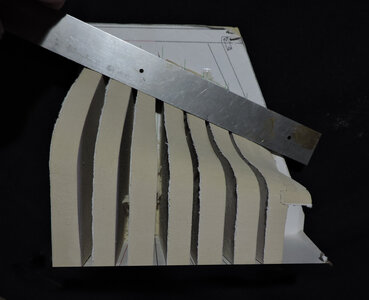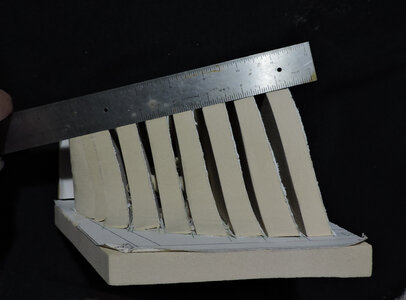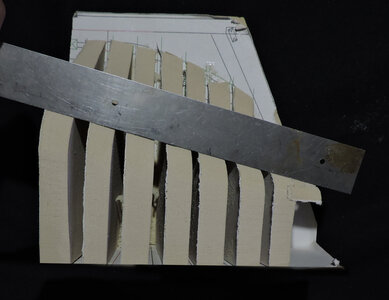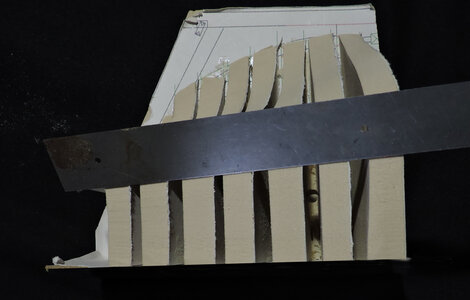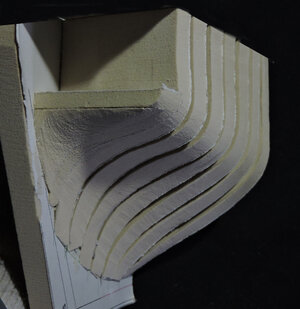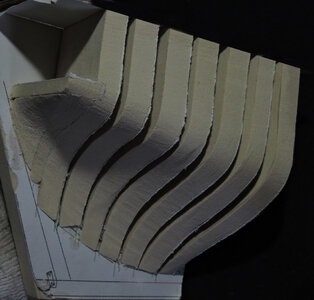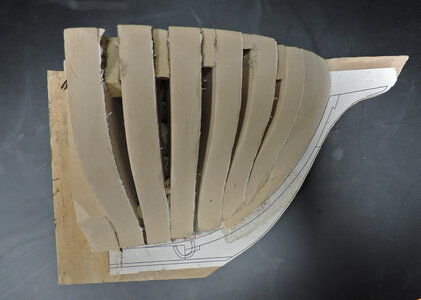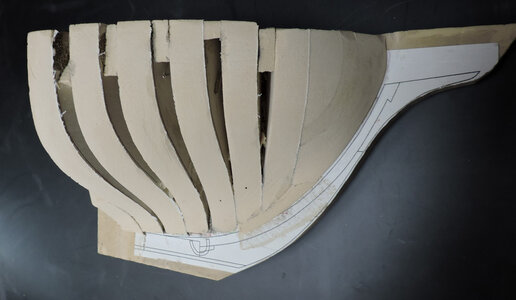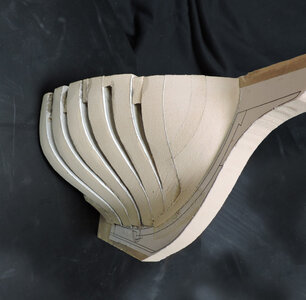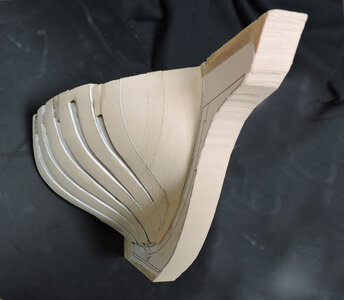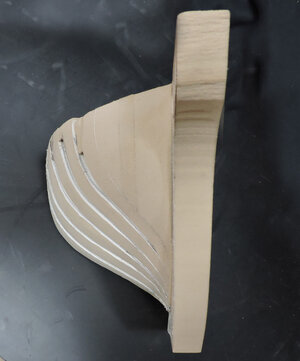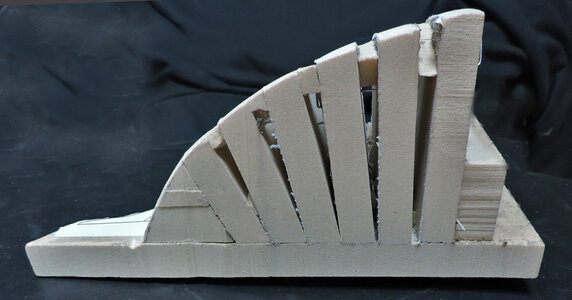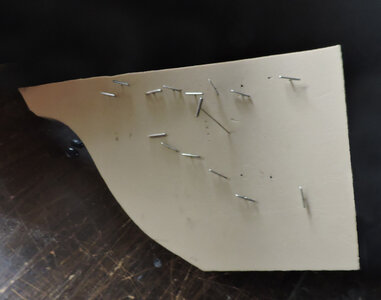now for the sanding, i used a Dremel tool with homemade sanding disks. The disks are made from plastic bottle tops and jars. A word on the Dremel tool, there are different models available and when you use them for something like sanding the Tecumseth hull they get hot. I have burned out more that one tool in the past. The 4000 series are a bit more heavy duty and do not get as hot as quickly as the smaller hobby size models. Another point is if you are using a disk for sanding make sure the size of the disk covers 2 frames or you may end up gouging a frame and by covering 2 frames at once you are using the frame surfaces to blend one frame into another. I also used a small palm sander for the final sanding.
One that looked like this one, there is a big difference between "hobby" tools and mini tools used for crafts The hobby tools are for the most part under powered or grossly over priced.
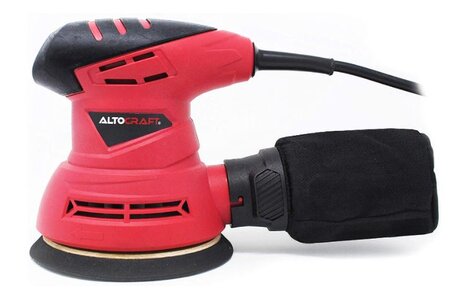
starting at the center at the bottom of the hull
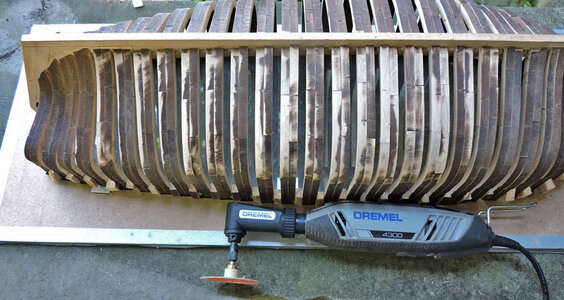
i am sanding to the bow and stern, the laser char is quite helpful because it is showing the low spots
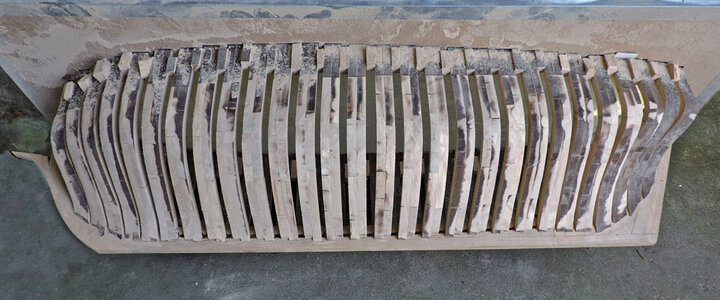
as i reach to stern you can see the bevels are starting to form as the sander is hitting the back side of the frame faces. This is why i did not bother sanding the bevels before installing the frames. Sanding the hull will create the bevels and they will tend to blend into one another.
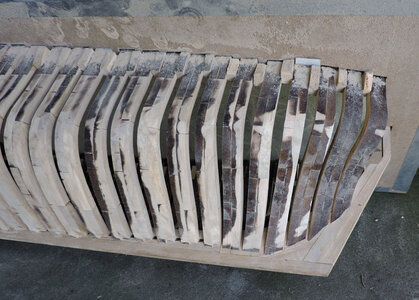
the same thing is going on at the bow the front of each frame forms the bevel from frame to frame.
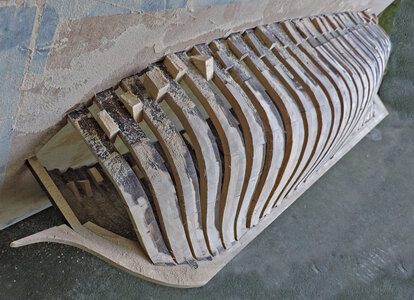
the more you sand at the stern the more the hull shape is formed and the bevel is hitting all the way back to the last frame.
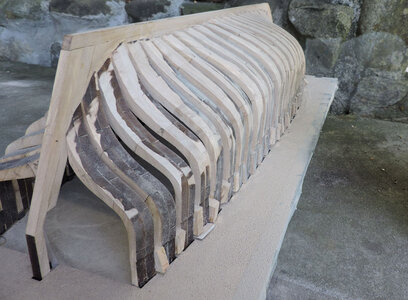
At the bow on the right side you see how the frames step down, on the left the sanding in of the bevels blends the frames into one another.
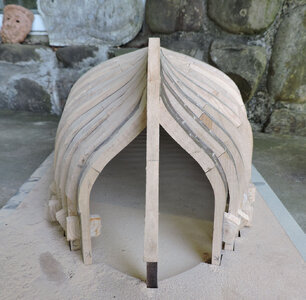
Working the length of the hull all the char is gone except for a couple low spots that will be sanded out with the final sanding. Here you now see where that notch at the top of the frames come into view. That notch is at the sheer line and defines the top of the hull. The extra wood above the notch comes in handy when you cut the hull down and create a smooth curved sheer line. If you did not have that extra wood above the sheer line every frame has to be exact or a frame might fall short of the sheer. Most of the time that will not matter because a cap rail and planking will cover the top of the frames.
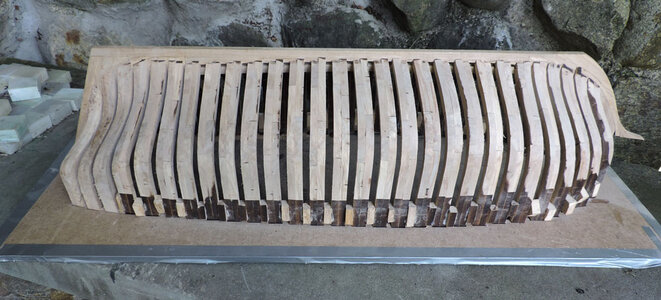 Then this happens!
Then this happens!
